#gis applications in energy sector
Explore tagged Tumblr posts
Text

Enhancing Gas Pipeline Management with GIS: Key Benefits and Applications
In the energy and utilities sector, gas pipeline management is complex, requiring precision, safety, and a clear strategy for both existing infrastructure and future expansion. Geographic Information Systems (GIS) have revolutionized pipeline management by providing a spatially accurate, data-rich view of assets. From asset management and leak detection to route planning and demand forecasting, GIS is becoming indispensable for gas companies. This blog delves into the ways GIS transforms gas pipeline management, delivering benefits across safety, efficiency, cost-saving, and planning.
#benefits of using gis for gas pipelines#ensuring gas pipeline safety with gis tools#gas network analysis#gas pipeline asset management#gas pipeline gis mapping services#gas pipeline leak detection using gis#gas pipeline management in gis#gas pipeline mapping software#gas pipeline monitoring tools#gas pipeline risk assessment#gis applications in energy sector#gis for gas pipeline monitoring#gis for infrastructure management#gis in oil and gas industry#gis pipeline maintenance software#gis pipeline monitoring system#gis pipeline route planning#gis software for gas pipeline route optimization#victoryofgoodoverevil#gis solutions for pipeline maintenance and monitoring#gis-based pipeline integrity management#pipeline data management#pipeline geographic information systems#pipeline management solutions#remote sensing for gas pipelines#spatial analysis for gas pipelines#spatial data for gas pipelines
0 notes
Text
GIS In Our Daily Lives
The involvement of Geographic Information Systems (GIS) in our daily lives is pervasive, influencing and enhancing various aspects across different sectors. The integration of GIS into everyday activities has become integral for decision-making, planning, and optimizing resources. GIS helps city planners and transportation experts to provide them with information like maps, satellite pictures, population statistics, and infrastructure data. GIS helps them make better decisions when designing cities and transportation systems that are sustainable and good for the environment.
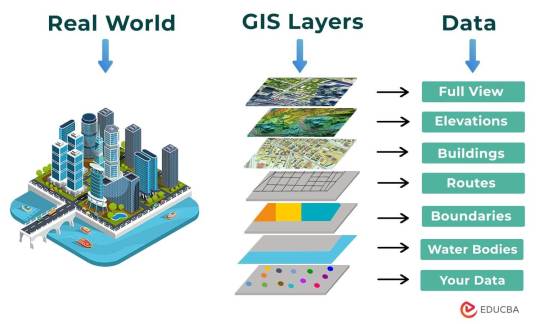
The following points elucidate the notable involvement of GIS in our daily lives:
Navigation and Location Services: GIS provides monitoring functions through the visual display of spatial data and precise geographical positioning of monitored vehicles, whereas GPS provides accurate, clear, and precise information on the position and navigation of a monitored or tracked vehicle in real-time and at the exact location.GIS is at the core of navigation applications and location-based services on smartphones. It enables accurate mapping, real-time navigation, and geolocation services, assisting individuals in finding locations, planning routes, and navigating unfamiliar areas.
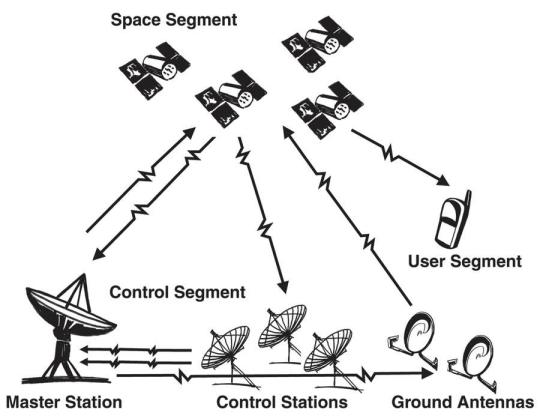
E-Commerce and Delivery Services: GIS software is a powerful tool for supply chain network planning. It helps determine the optimal location for distribution centers, warehouses, or other supply facilities. GIS is utilized in logistics and delivery services for optimizing routes, tracking shipments, and ensuring timely deliveries. E-commerce platforms leverage GIS to enhance the efficiency of their supply chain and last-mile delivery processes.
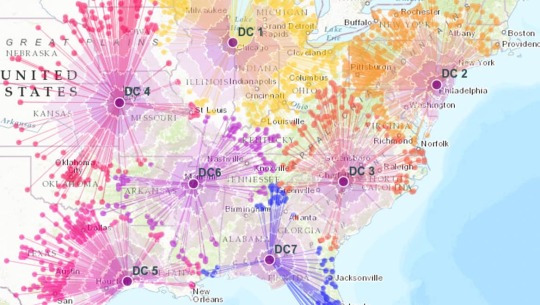
Weather Forecasting and Disaster Management: Many states are using GIS dashboard to monitor the rainfall across the state, on a real-time basis, from the data shared by rain sensors installed at various locationsGIS plays a crucial role in weather forecasting and disaster management. It assists meteorologists in analyzing spatial data, predicting weather patterns, and facilitating timely responses to natural disasters by mapping affected areas and coordinating emergency services.
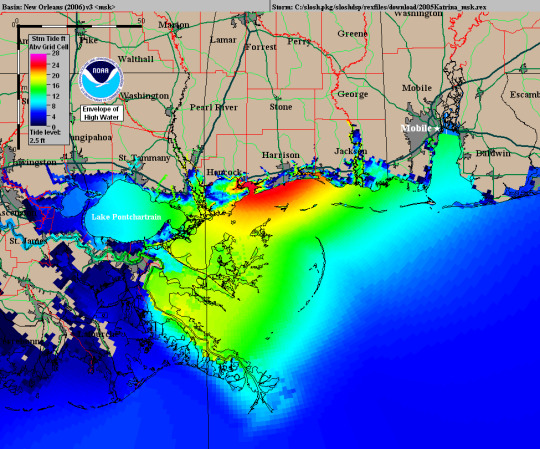
Healthcare Planning and Disease Monitoring: Geographic Information Systems enable the visualization and monitoring of infectious diseases. Additionally GIS records and displays the necessary information that health care needs of the community as well as the available resources and materials. GIS supports public health initiatives by mapping the spread of diseases, analyzing healthcare resource distribution, and assisting in the planning of vaccination campaigns. It aids in identifying high-risk areas and optimizing healthcare service delivery.

Social Media and Geo-tagging: GIS also helps in geotagging and other location related information in posts, it’s tools can map and visualize the spatial distribution of social media activity. This analysis can reveal trends, hotspots, and patterns in user engagement across different geographic areas. Many social media platforms incorporate GIS for geo-tagging, allowing users to share their location and experiences. This feature enhances social connectivity and facilitates the sharing of location-specific information.
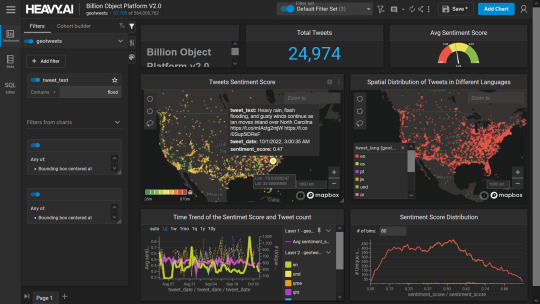
Smart City Initiatives: The Geographic Information System (GIS) offers advanced and user-friendly capabilities for Smart City projects and allows to capture, store and manipulate, analyze and visualize spatially referenced data. It is used for spatial analysis and modeling. It is the cornerstone of smart city planning, enabling the integration of data for efficient urban management. It supports initiatives related to traffic management, waste disposal, energy consumption, and overall infrastructure development.
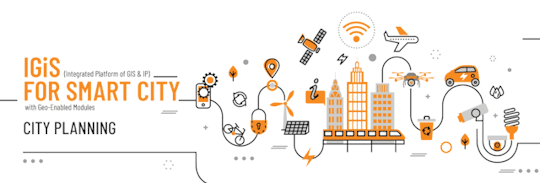
Education and Research: GIS is increasingly utilized in education and research for visualizing and analyzing spatial data. It enables students and researchers to explore geographic relationships, conduct field studies, and enhance their understanding of various subjects.

Agricultural Management and Precision Farming: Farmers leverage GIS to optimize agricultural practices by analyzing soil conditions, crop health, and weather patterns. Precision farming techniques, facilitated by GIS, contribute to increased crop yields and sustainable farming practices.
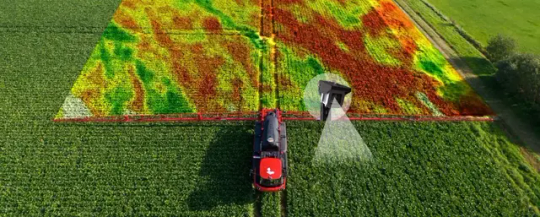
Real Estate and Property Management: In the real estate sector, GIS aids in property mapping, land valuation, and site selection. It provides real estate professionals with valuable insights into spatial relationships, market trends, and optimal development opportunities.

Tourism and Recreation: GIS enhances the tourism industry by providing interactive maps, route planning, and location-based information. It assists tourists in exploring destinations, finding attractions, and navigating efficiently.

The broad and varied involvement of GIS in our daily lives underscores its significance as a technology that not only facilitates geographic data analysis but also contributes to the efficiency, safety, and interconnectedness of modern society. As GIS applications continue to evolve, their impact on daily activities is expected to further expand and refine.
#gis#architectdesign#architecture#city#education#geographic information system(gis)#geographical indication
13 notes
·
View notes
Text
Common Applications of GI Pipes in Construction and Infrastructure
In the dynamic landscape of construction and infrastructure development, the role of Galvanized Iron (GI) pipes has become increasingly significant. As Tube Trading Co., a leading GI Pipe Dealer, Distributor, and Supplier in Gujarat, we understand the pivotal role that GI pipes play in various construction applications. In this blog post, we will explore the common applications of GI pipes and shed light on why they are the preferred choice in the construction and infrastructure sectors.
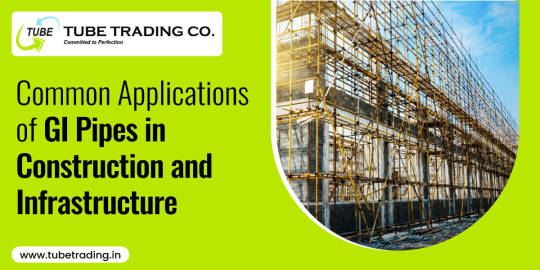
Understanding GI Pipes
Galvanized Iron pipes are steel pipes that have been coated with a layer of zinc to prevent corrosion. This process, known as galvanization, not only protects the pipes from rusting but also enhances their longevity. The combination of durability and cost-effectiveness makes GI pipes a popular choice for a wide range of applications in the construction industry.
Water Supply Systems
One of the primary applications of GI pipes is in water supply systems. The corrosion-resistant nature of these pipes makes them ideal for transporting potable water over long distances. As a GI Pipe Dealer in Gujarat, we have witnessed a surge in the demand for these pipes in municipal water supply projects and rural water distribution networks.
Plumbing Installations
GI pipes are widely used in plumbing installations due to their versatility and ease of installation. Whether it's residential, commercial, or industrial plumbing, GI pipes provide a reliable solution for conveying water and other fluids. Their strength and resistance to corrosion ensure leak-free plumbing systems, making them a preferred choice for plumbers and contractors.
Irrigation Systems
In agricultural settings, where water distribution is crucial for crop growth, GI pipes find extensive use in irrigation systems. The zinc coating protects the pipes from the elements, ensuring a longer lifespan even when exposed to varying weather conditions. As a GI Pipe Distributor in Gujarat, we have supplied pipes for irrigation projects that contribute to sustainable agriculture practices.
Structural Support in Construction
The strength and durability of GI pipes make them suitable for providing structural support in construction projects. From scaffolding to framework structures, these pipes offer the required strength without compromising on safety. As a GI Pipe Supplier in Vadodara, we have collaborated with builders and contractors who appreciate the reliability and structural integrity that GI pipes bring to their projects.
Fencing and Handrails
In the realm of infrastructure, GI pipes are frequently used for fencing and handrails. The corrosion resistance and robustness of these pipes make them an ideal choice for creating secure and long-lasting barriers. Whether it's for highways, bridges, or industrial facilities, GI pipes contribute to the safety and security of these structures.
Oil and Gas Pipelines
The oil and gas industry relies heavily on robust pipelines to transport resources from extraction sites to processing facilities. GI pipes, with their corrosion-resistant properties, are employed in these pipelines, ensuring the efficient and safe transport of oil and gas over long distances. As a trusted GI Pipe Supplier in Gujarat, we have been a part of projects that facilitate the energy infrastructure of the region.
Fire Sprinkler Systems
Fire safety is a critical aspect of any building, and GI pipes play a vital role in fire sprinkler systems. The corrosion-resistant coating ensures that these pipes remain reliable even when not in constant use. This makes GI pipes a preferred choice for fire protection systems in residential, commercial, and industrial buildings.
Greenhouse Structures
In the realm of agriculture and horticulture, GI pipes are utilized in the construction of greenhouse structures. The ability to withstand varying climatic conditions, coupled with their durability, makes GI pipes an excellent choice for creating the framework of greenhouses. This ensures a conducive environment for plant growth and protection against external elements.
Conclusion
In conclusion, the applications of GI pipes in construction and infrastructure are diverse and crucial for the development of resilient and long-lasting structures. Tube Trading Co., as a prominent GI Pipe Dealer, Distributor, and Supplier in Gujarat, takes pride in contributing to the growth and sustainability of the region's construction and infrastructure sectors. Whether it's supplying pipes for water supply, plumbing, irrigation, or structural support, GI pipes continue to be the preferred choice for builders, contractors, and engineers alike.
If you are in need of high-quality GI pipes for your construction projects, look no further than Tube Trading Co. Our commitment to providing top-notch products and excellent service has made us a trusted partner in the construction and infrastructure industry. Contact us today for all your GI pipe requirements in Gujarat and Vadodara.
#GI Pipe Supplier in Vadodara#GI Pipe Dealer in Gujarat#GI Pipe Distributor in Gujarat#Steel industry#Stainless Steel#Steel company#construction#construction structure#plumbing#irrigation#fire springkler#greenhouse structure#India#Gujarat#Vadodara
6 notes
·
View notes
Text
Airless Tire Tech: $3.5B to $7.2B by 2034
Airless Tire Technology market is rapidly evolving, presenting a transformative solution for the automotive and transportation industries. Traditional pneumatic tires have been a staple for vehicles for decades, but they come with certain limitations, such as the risk of punctures and the need for regular air pressure maintenance. Airless tires, on the other hand, offer a unique solution by eliminating the need for air entirely, making them more durable and safer for a wide range of vehicles, including cars, trucks, bicycles, and even construction equipment.
To Request Sample Report: https://www.globalinsightservices.com/request-sample/?id=GIS10837 &utm_source=SnehaPatil&utm_medium=Article
These tires are made from advanced materials like thermoplastic polymers and metal components, providing superior durability and resistance to wear and tear. One of the key advantages of airless tire technology is its ability to maintain performance even when the tire is exposed to extreme conditions, such as high temperatures, rough terrains, or heavy loads. Additionally, airless tires are not susceptible to punctures, which drastically reduces the risk of tire failures and improves the safety and reliability of vehicles.
The adoption of airless tires is gaining momentum across various sectors, including electric vehicles (EVs), where the demand for lightweight, energy-efficient components is high. With the growing trend of sustainability in the automotive industry, airless tires are also being viewed as an eco-friendly alternative due to their longer lifespan and reduced need for maintenance.
As tire manufacturers continue to innovate, the future of airless tire technology looks promising. The market is expected to witness significant growth, driven by increasing consumer demand for safer, more durable, and cost-effective tire solutions.
#airlesstires #tiretechnology #automotiveinnovation #sustainablemobility #electricvehicles #evtechnology #autonomousvehicles #punctureproof #durabletires #tiresafety #nextgenmobility #greenmobility #smartmobility #automotiveindustry #transportationtechnology #tiremanufacturing #materialscience #advancedmaterials #automotivedesign #reliableride #innovativetechnology #tiresolutions #lightweighttires #vehicleperformance #automotivesafety #futureofmobility #greeninnovations #eco-friendlytires #autotech #maintenancefree #constructionequipment #automotivetrends
Research Scope:
· Estimates and forecast the overall market size for the total market, across type, application, and region
· Detailed information and key takeaways on qualitative and quantitative trends, dynamics, business framework, competitive landscape, and company profiling
· Identify factors influencing market growth and challenges, opportunities, drivers, and restraints
· Identify factors that could limit company participation in identified international markets to help properly calibrate market share expectations and growth rates
· Trace and evaluate key development strategies like acquisitions, product launches, mergers, collaborations, business expansions, agreements, partnerships, and R&D activities
About Us:
Global Insight Services (GIS) is a leading multi-industry market research firm headquartered in Delaware, US. We are committed to providing our clients with highest quality data, analysis, and tools to meet all their market research needs. With GIS, you can be assured of the quality of the deliverables, robust & transparent research methodology, and superior service.
Contact Us:
Global Insight Services LLC 16192, Coastal Highway, Lewes DE 19958 E-mail: [email protected] Phone: +1–833–761–1700 Website: https://www.globalinsightservices.com/
0 notes
Text
Copper bonded earth electrode supplier
Copper Bonded Earth Electrode: An Overview
Copper bonded earth electrodes are a critical component in modern grounding systems, providing a reliable and durable solution for earthing applications. These electrodes are designed to dissipate fault currents effectively, ensuring the safety of electrical systems and protecting equipment from potential damage. Below is an in-depth exploration of their characteristics, advantages, applications, and installation practices.
1. What is a Copper Bonded Earth Electrode?
A copper bonded earth electrode consists of a steel core that is uniformly coated with copper through an electrolytic process. This combination leverages the high conductivity of copper and the tensile strength of steel, making the electrode both efficient and durable. The copper layer typically has a thickness ranging from 100 to 254 microns, depending on the application requirements.
2. Features and Benefits
High Conductivity: The copper coating ensures excellent electrical conductivity, enabling efficient dissipation of fault currents.
Corrosion Resistance: The copper layer provides strong resistance to corrosion, ensuring a long service life even in harsh environmental conditions.
Mechanical Strength: The steel core offers robust mechanical strength, making the electrode suitable for various soil types and installations.
Cost-Effective: Compared to pure copper rods, copper bonded electrodes are more economical without compromising performance.
Environmentally Friendly: These electrodes are free from harmful substances, making them a sustainable choice for earthing systems.
3. Applications
Copper bonded earth electrodes are widely used across various sectors, including:
Residential Buildings: Ensuring the safety of home electrical systems.
Industrial Facilities: Protecting sensitive machinery and equipment from electrical surges.
Telecommunication Towers: Providing stable grounding for signal clarity and equipment protection.
Renewable Energy Systems: Safeguarding solar and wind installations.
Power Distribution Networks: Maintaining system integrity and preventing outages.
4. Installation Practices
Proper installation of copper bonded earth electrodes is crucial for optimal performance. Key steps include:
Site Assessment: Analyzing soil resistivity to determine the appropriate electrode size and placement.
Drilling and Placement: Installing the electrode at a sufficient depth to achieve low resistance to earth.
Backfilling with Bentonite or Graphite: Enhancing conductivity and reducing soil resistance.
Connection with Conductors: Ensuring secure connections to the grounding conductor using clamps or welding.
Regular Maintenance: Periodic testing and inspection to ensure consistent performance.
5. Advantages Over Traditional Electrodes
Compared to galvanized iron (GI) and pure copper electrodes, copper bonded electrodes strike a balance between cost, performance, and longevity. While GI electrodes are prone to corrosion, and pure copper electrodes can be expensive, copper bonded electrodes offer a middle ground with enhanced durability and affordability.
Conclusion
Copper bonded earth electrodes are an indispensable part of effective grounding systems. Their unique combination of durability, conductivity, and cost-efficiency makes them a preferred choice across various applications. By ensuring proper installation and maintenance, these electrodes can significantly enhance the safety and reliability of electrical systems.
0 notes
Text
GI Ducting Manufacturers in India
GI (Galvanized Iron) ducting manufacturers in India play a vital role in the HVAC (Heating, Ventilation, and Air Conditioning) and industrial sectors. They specialize in the design, production, and supply of ductwork systems used to distribute air efficiently within residential, commercial, and industrial spaces. GI ducting is known for its durability, resistance to corrosion, and cost-effectiveness, making it a preferred choice for ventilation systems across diverse applications. Below, we explore the key aspects of what GI Ducting Manufacturers in India do.

1. Manufacture Durable Ducting Solutions
The primary function of Galvanized iron ducting manufacturers in India is to produce high-quality ducts made from galvanized iron. This material is steel coated with a protective layer of zinc to prevent rust and corrosion, ensuring long-lasting performance in various environmental conditions. Manufacturers use advanced techniques such as CNC plasma cutting, roll forming, and welding to produce precise and durable ducting systems that meet industry standards.
2. Customization of Duct Designs
Each project may have unique requirements depending on the building layout, airflow needs, and environmental conditions. GI ducting manufacturers, like the SS Insulation India provide customized solutions tailored to specific client requirements. They design ducts in different shapes, such as rectangular, circular, and spiral, to accommodate space constraints and optimize air distribution. Customization also includes adjustments to thickness, size, and insulation based on project demands.
3. Energy Efficiency and Airflow Optimization
Efficient ducting systems are crucial for maintaining consistent airflow and reducing energy consumption in HVAC systems. GI ducting manufacturers focus on designing ducts with minimal air leakage and friction, ensuring optimal airflow throughout the system. This contributes to improved energy efficiency and reduces operational costs for clients.
4. Compliance with Standards and Certifications
Galvanized iron ducting manufacturers in Karnataka and other Indian regions adhere to strict industry standards and certifications to ensure product quality and safety. Compliance with standards such as IS 277 (Indian Standard for galvanized iron sheets) and SMACNA (Sheet Metal and Air Conditioning Contractors’ National Association) guidelines is common practice. These standards guarantee that the ducting systems meet the required specifications for performance, durability, and safety.
5. Versatility in Applications
GI ducting systems are used in a wide range of industries and environments, including:
Commercial Spaces: Offices, shopping malls, hospitals, and hotels require ducting for air conditioning and ventilation systems.
Industrial Plants: Factories and manufacturing units utilize GI ducting for processes like dust collection, fume extraction, and ventilation.
Residential Buildings: GI ducts are often installed in centralized air conditioning systems in modern homes.
Infrastructure Projects: Airports, metro stations, and large public spaces rely on durable ducting solutions for air circulation.
6. After-Sales Support and Maintenance
In addition to manufacturing and supplying ducting systems, many manufacturers provide after-sales services, including installation support, maintenance, and repair. Regular maintenance ensures the longevity and efficiency of ducting systems, helping clients avoid disruptions and costly repairs.
7. Focus on Sustainability
As India embraces greener practices in construction and industrial processes, GI ducting manufacturers are increasingly focusing on sustainable production methods. They aim to reduce waste during manufacturing, utilize recyclable materials, and design energy-efficient products that align with environmental standards.
Conclusion
GI Ducting Manufacturers in India are integral to the development of robust and efficient air distribution systems. Their expertise spans design, production, and customization, catering to the diverse needs of the HVAC and industrial sectors. By prioritizing quality, energy efficiency, and sustainability, these manufacturers contribute to improved indoor air quality and operational efficiency across a wide range of applications. To get more details, visit https://www.ssinsulationindia.com/galvanized-iron-duct-manufacturers-in-india.php
0 notes
Text
Farm Management Software Industry Size, Trends, Statistics and Analysis Report, 2030
The global farm management software market was valued at USD 3.30 billion in 2022 and is expected to grow at a compound annual growth rate (CAGR) of 16.2% from 2023 to 2030. This growth is primarily driven by the increasing adoption of cloud computing for real-time farm data management, which allows for better decision-making and resource optimization. Farm management software leverages Information Communication Technology (ICT), including the Internet of Things (IoT) and big data analytics, to help farmers overcome challenges related to energy, water, and labor shortages. Additionally, FMS addresses environmental concerns, animal welfare, and fertilizer usage, all of which can negatively impact agricultural productivity.
One of the key factors contributing to the growth of the FMS market is the increased adoption of remote sensing technology in the agriculture sector. Drones and Geographic Information Systems (GIS) have made it easier to use remote sensing devices to capture detailed images of crops and farmland. These images can be analyzed to detect crop water stress, monitor weeds and crop diseases, classify crop species, and map soil properties. Several open-source remote sensing tools are available, including Quantum GIS Semi-Automatic Classification Plugin (SCP), Optical and Radar Federated Earth Observation (ORFEO) toolbox, Opticks, and PolSARPro, which further support the adoption of this technology.
Gather more insights about the market drivers, restrains and growth of the Farm Management Software Market
The use of site-specific crop management (SSCM) is expected to become more prevalent, as it allows farmers to optimize pesticide use, improve crop yields, and make more informed management decisions. Advanced farm management software equipped with data analytics capabilities can process both historical and real-time data to generate predictive models. These models help farmers forecast crop performance under different environmental conditions, providing insights into areas like weather patterns, soil quality, and crop health. By offering these insights, FMS can help farmers make informed decisions about fertilization, pest control, and irrigation. Phenotyping, which involves the analysis of crop traits such as nitrogen depletion and soil pH levels, plays a critical role in understanding crop growth under different environmental conditions, further supporting the efforts to boost crop yields.
Agriculture Type Segmentation Insights:
The farm management software market is segmented based on agriculture type into precision farming, livestock monitoring, smart greenhouses, and others, which include horticulture and fish farming. In 2022, the precision farming segment accounted for the largest share of the market at 43.5%, and it is expected to maintain its dominance throughout the forecast period.
Precision farming is a key driver of the FMS market due to its use of IoT and ICT to optimize resources and maximize yields. By measuring conditions within a field and adapting farming strategies accordingly, precision farming allows growers to control the amount of fertilizers applied to crops, leading to more efficient farming. Both hardware and software tools are used to analyze natural conditions such as soil moisture, temperature, and plant growth in specific fields, allowing for targeted interventions. Key applications of precision farming include yield monitoring, crop scouting, irrigation management, inventory management, and weather tracking. These technologies help farmers make better decisions to enhance crop production while reducing resource consumption.
Precision livestock monitoring is another growing area within farm management software. This technology provides real-time data on livestock health, productivity, and welfare, ensuring that animals are managed in a way that optimizes yield. As the size of dairy farms increases, technological advancements such as precision livestock monitoring are becoming increasingly important. Market players are focusing on launching new products that reduce the costs associated with livestock monitoring and management, making these technologies more accessible to farmers. Additionally, the rise in urban populations has driven growth in the smart greenhouse segment. Smart greenhouses are designed to provide optimal growing conditions for crops by using sensors and automated systems to monitor and adjust variables such as temperature, humidity, and light. This segment is expected to benefit from ongoing urbanization and the growing demand for locally sourced, fresh produce.
In summary, the farm management software market is growing rapidly due to the increasing adoption of advanced technologies that enable more efficient, data-driven agricultural practices. These technologies are helping farmers improve yields, reduce resource consumption, and address various challenges related to agriculture in today's environment.
Order a free sample PDF of the Farm Management Software Market Intelligence Study, published by Grand View Research.
#Farm Management Software Industry#Farm Management Software Market Research#Farm Management Software Market Forecast#Farm Management Software Market Overview
0 notes
Text
Farm Management Software Industry Trends, Size, Revenue And Top Key Players, 2030
The global farm management software market was valued at USD 3.30 billion in 2022 and is expected to grow at a compound annual growth rate (CAGR) of 16.2% from 2023 to 2030. This growth is primarily driven by the increasing adoption of cloud computing for real-time farm data management, which allows for better decision-making and resource optimization. Farm management software leverages Information Communication Technology (ICT), including the Internet of Things (IoT) and big data analytics, to help farmers overcome challenges related to energy, water, and labor shortages. Additionally, FMS addresses environmental concerns, animal welfare, and fertilizer usage, all of which can negatively impact agricultural productivity.
One of the key factors contributing to the growth of the FMS market is the increased adoption of remote sensing technology in the agriculture sector. Drones and Geographic Information Systems (GIS) have made it easier to use remote sensing devices to capture detailed images of crops and farmland. These images can be analyzed to detect crop water stress, monitor weeds and crop diseases, classify crop species, and map soil properties. Several open-source remote sensing tools are available, including Quantum GIS Semi-Automatic Classification Plugin (SCP), Optical and Radar Federated Earth Observation (ORFEO) toolbox, Opticks, and PolSARPro, which further support the adoption of this technology.
Gather more insights about the market drivers, restrains and growth of the Farm Management Software Market
The use of site-specific crop management (SSCM) is expected to become more prevalent, as it allows farmers to optimize pesticide use, improve crop yields, and make more informed management decisions. Advanced farm management software equipped with data analytics capabilities can process both historical and real-time data to generate predictive models. These models help farmers forecast crop performance under different environmental conditions, providing insights into areas like weather patterns, soil quality, and crop health. By offering these insights, FMS can help farmers make informed decisions about fertilization, pest control, and irrigation. Phenotyping, which involves the analysis of crop traits such as nitrogen depletion and soil pH levels, plays a critical role in understanding crop growth under different environmental conditions, further supporting the efforts to boost crop yields.
Agriculture Type Segmentation Insights:
The farm management software market is segmented based on agriculture type into precision farming, livestock monitoring, smart greenhouses, and others, which include horticulture and fish farming. In 2022, the precision farming segment accounted for the largest share of the market at 43.5%, and it is expected to maintain its dominance throughout the forecast period.
Precision farming is a key driver of the FMS market due to its use of IoT and ICT to optimize resources and maximize yields. By measuring conditions within a field and adapting farming strategies accordingly, precision farming allows growers to control the amount of fertilizers applied to crops, leading to more efficient farming. Both hardware and software tools are used to analyze natural conditions such as soil moisture, temperature, and plant growth in specific fields, allowing for targeted interventions. Key applications of precision farming include yield monitoring, crop scouting, irrigation management, inventory management, and weather tracking. These technologies help farmers make better decisions to enhance crop production while reducing resource consumption.
Precision livestock monitoring is another growing area within farm management software. This technology provides real-time data on livestock health, productivity, and welfare, ensuring that animals are managed in a way that optimizes yield. As the size of dairy farms increases, technological advancements such as precision livestock monitoring are becoming increasingly important. Market players are focusing on launching new products that reduce the costs associated with livestock monitoring and management, making these technologies more accessible to farmers. Additionally, the rise in urban populations has driven growth in the smart greenhouse segment. Smart greenhouses are designed to provide optimal growing conditions for crops by using sensors and automated systems to monitor and adjust variables such as temperature, humidity, and light. This segment is expected to benefit from ongoing urbanization and the growing demand for locally sourced, fresh produce.
In summary, the farm management software market is growing rapidly due to the increasing adoption of advanced technologies that enable more efficient, data-driven agricultural practices. These technologies are helping farmers improve yields, reduce resource consumption, and address various challenges related to agriculture in today's environment.
Order a free sample PDF of the Farm Management Software Market Intelligence Study, published by Grand View Research.
#Farm Management Software Industry#Farm Management Software Market Research#Farm Management Software Market Forecast#Farm Management Software Market Overview
0 notes
Text
Precision Farming Market Size, Trends, and Business Outlook 2024 - 2030
The global precision farming market size was valued at USD 10.50 billion in 2023 and is expected to grow at a compound annual growth rate (CAGR) of 12.8% from 2024 to 2030.
The growth of precision farming is attributed to the burgeoning proliferation of the Internet of Things (IoT) along with the use of advanced analytics by farmers. Advanced analytics is a part of data science that uses numerous tools and methods to forecast data and ensure that the crop and soil receive adequate nurturing. This helps farmers to plan their actions accordingly.
For a deep understanding of different farming aspects such as irrigation and plowing, numerous technologies such as IoT, GPS, and remote sensing application control are used. IoT helps farmers address various challenges involved in the proper monitoring of crops. It provides real-time data about environment temperature and water content in the soil through sensors placed on the farm, which assists farmers in making improved decisions about harvesting times, crop market rate, and soil management. This is one of the key factors contributing to the growth of the market for precision farming.
Gather more insights about the market drivers, restrains and growth of the Precision Farming Market
Precision Farming Market Report Highlights
• Increasing government support for adopting modern agricultural techniques and the growing need for efficiently monitoring the health of crops are expected to drive market growth
• The cloud-based software model is anticipated to gain a significant share of the market over the projected period as it reduces energy consumption and provides storage for a large amount of data while facilitating cost saving
• Innovations in GPS mapping and related farming applications are enabling farmers to operate more efficiently and increase their profit margin
• Demand for drones is expected to grow in the agriculture field as they are increasingly used to monitor irrigation systems
• Yield monitoring is expected to continue leading the application segment in terms of revenue share. It is widely used in soil monitoring since it detects soil qualities that may be used to increase yields
• The digital revolution in the agricultural sector, along with government financial incentives to farms, is likely to drive demand for precision farming in Europe in the forthcoming years
• Asia Pacific is expected to showcase the fastest growth owing to the availability of the largest agricultural land, which provides growth opportunities in countries such as China, India, Australia, and Japan
Browse through Grand View Research's Next Generation Technologies Industry Research Reports.
• The global artificial intelligence in agriculture market size was valued at USD 1.91 billion in 2023 and is projected to grow at a compound annual growth rate (CAGR) of 25.5% from 2024 to 2030.
• The global industrial wireless sensor network market size was valued at USD 5.19 billion in 2023 and is projected to grow at a compound annual growth rate (CAGR) of % from 2024 to 2030.
Precision Farming Market Segmentation
Grand View Research has segmented the global precision farming market report based on offering, application, and region.
Offering Outlook (Revenue, USD Million; 2017 - 2030)
• Hardware
o Automation & Control Systems
o Drones
o Application Control Devices
o Guidance System
o GPS
o GIS
o Remote Sensing
o Handheld
o Satellite Sensing
o Driverless Tractors
o Mobile Devices
o VRT
o Map-based
o Sensor-based
o Wireless Modules
o Bluetooth Technology
o Wi-Fi Technology
o Zigbee Technology
o RF Technology
o Sensing Devices
o Soil Sensor
o Nutrient Sensor
o Moisture Sensor
o Temperature Sensor
o Water Sensors
o Climate Sensors
o Others
o Antennas & Access Points
• Software
o Web-based
o Cloud-based
• Services
o System Integration & Consulting
o Maintenance & Support
o Managed Types
o Data Types
o Analytics Types
o Farm Operation Types
o Assisted Professional Types
o Supply Chain Management Types
o Climate Information Types
Application Outlook (Revenue, USD Million; 2017 - 2030)
• Yield Monitoring
o On-Farm
o Off-Farm
• Field Mapping
• Crop Scouting
• Weather Tracking & Forecasting
• Irrigation Management
• Inventory Management
• Farm Labor Management
Regional Outlook (Revenue, USD Billion, 2017 - 2030)
• North America
o U.S.
o Canada
o Mexico
• Europe
o U.K.
o Germany
o France
o Russia
o Italy
• Asia Pacific
o China
o Japan
o India
o Australia
o Singapore
• South America
o Brazil
• Middle East and Africa (MEA)
Order a free sample PDF of the Precision Farming Market Intelligence Study, published by Grand View Research.
#Precision Farming Market#Precision Farming Market size#Precision Farming Market share#Precision Farming Market analysis#Precision Farming Industry
0 notes
Text
Farm Management Software Market - Positive Long-Term Growth Outlook 2030
Farm Management Software Industry Overview
The global farm management software market size was estimated at USD 3.30 billion in 2022 and is expected to grow at a compound annual growth rate (CAGR) of 16.2% from 2023 to 2030.
The growth of the market can be attributed to the increasing implementation of cloud computing for real-time farm data management. Farm Management Software (FMS) involves the use of Information Communication Technology (ICT), particularly IoT and big data analytics, to address resource constraints such as shortage of energy, water, and labor and social issues such as environment, animal welfare and use of fertilizers, which negatively influence the agricultural production.
Gather more insights about the market drivers, restrains and growth of the Farm Management Software Market
The adoption of remote sensing technology in the agriculture industry has increased due to the emergence of drones and GIS. The images captured through a device featuring remote sensing technology can be used for the detection of cop water stress, monitoring weeds & crop diseases, classification of crop species, and mapping of soil properties. Some open-source remote sensing software includes Quantum GIS Semi-Automatic Classification Plugin (SCP), Optical and Radar Federated Earth Observation (ORFEO) toolbox, Opticks, and PolSARPro.
The increasing use of site-specific crop management is expected to reduce pesticide use, increase crop yields, and provide greater insight for farm management decisions. Farm management software equipped with advanced data analytics capabilities can process historical and real-time data to generate predictive models, enabling farmers to forecast crop performance under different environmental conditions. By analyzing factors like weather patterns, soil quality, and crop health, the software can offer valuable insights to make informed decisions regarding fertilization, pest control, and irrigation. Forecasting crop performance under various environmental situations can assist farmers in boosting their yield. Phenotyping aids in the understanding of several elements affecting crop growth, such as nitrogen depletion and soil pH levels. It is used to determine crop growth under various situations.
The players in the agriculture industry are acknowledging the need for technology infusion to increase the production of crops. The growing farm mechanization has increased the profitability of the agriculture sector in developed countries. Modern agriculture involves the use of software and hardware components. Equipment manufacturing requires embedded application software and hardware, along with network services.
Browse through Grand View Research's Next Generation Technologies Industry Research Reports.
• The global aviation software market size was estimated at USD 10.68 billion in 2023 and is expected to grow at a CAGR of 7.2% from 2024 to 2030.
• The global generative AI in financial services market size was estimated at USD 1,673.1 million in 2023 and is projected to grow at a CAGR of 39.1% from 2024 to 2030.
Global Farm Management Software Market Report Segmentation
This report forecasts revenue growth at the global, regional, and country levels and provides an analysis of the latest trends and opportunities in each of the sub-segments over the forecast period. For this study, Grand View Research has segmented the global farm management software market report based on agriculture type, deployment model, solution, and region.
Agriculture Type Outlook (Revenue, USD Million, 2017 - 2030)
Precision Farming
Livestock Monitoring
Smart Greenhouse
Others
Deployment Model Outlook (Revenue, USD Million, 2017 - 2030)
Web-based
Cloud-based
Solution Outlook (Revenue, USD Million, 2017 - 2030)
Software
Services
System Integration & Consulting
Maintenance & Support
Managed Services
Data Services
Analytics Services
Farm Operation Services
Assisted Professional Services
Supply Chain Management Services
Climate Information Services
Regional Outlook (Revenue, USD Million, 2017 - 2030)
North America
US
Canada
Europe
UK
Germany
France
Asia Pacific
China
India
Japan
South Korea
Australia
Latin America
Brazil
Mexico
Middle East and Africa (MEA)
Kingdom of Saudi Arabia (KSA)
UAE
South Africa
Key Companies & Market Share Insights
The market is competitive and has the presence of several key market players. These players are adopting strategies such as partnerships and collaborations to gain a competitive edge. For instance, in January 2021, Farmers Edge, Inc. announced a partnership with Google Cloud to promote the company’s services and boost the implementation of artificial intelligence, machine learning, and predictive analysis in its program. Some prominent players in the global farm management software market include:
Ag Leader Technology
AgJunction LLC
BouMatic
CropX, Inc.
CropZilla Inc.
DeLaval
DICKEY-john
Deere & Company
Corteva
CNH Industrial
Trimble Inc.
Climate LLC.
Gamaya
GEA Group Aktiengesellschaft
Farmers Edge Inc.
Gronetics
Order a free sample PDF of the Farm Management Software Market Intelligence Study, published by Grand View Research.
0 notes
Text
Maltodextrin Powder Manufacturers, Supplier, Exporter in India - Gujarat Ambuja Exports Limited
Maltodextrin Powder Manufacturers, Supplier, Exporter in India - Gujarat Ambuja Exports Limited

Maltodextrin, though categorized as a complex carbohydrate, possesses a notable characteristic: a relatively high Glycemic Index (GI). This attribute signifies its rapid absorption into the body, akin to the swift assimilation of Dextrose. Its swift absorption renders it an exceptional source of immediate energy, as it swiftly elevates blood sugar levels and expeditiously replenishes glycogen reserves post-consumption. Widely embraced in various sectors, Maltodextrin is a favored carbohydrate due to its versatility and efficiency.
One of the primary advantages of Maltodextrin lies in its high GI status. This characteristic ensures its rapid digestion and absorption by the body, delivering a quick surge of energy to the system. Unlike other complex carbohydrates that may take longer to break down, Maltodextrin offers a swift energy boost, making it particularly advantageous for athletes and individuals engaging in high-intensity activities.
Furthermore, Maltodextrin serves as an excellent source of energy, thanks to its rapid metabolic processing. Whether it's fueling a rigorous workout session or replenishing energy levels post-exercise, Maltodextrin provides a readily available energy source that can be efficiently utilized by the body.
In industrial terms, Maltodextrin boasts a substantial total capacity of 63 MT/day, highlighting its widespread applicability and demand. Its division within the starch category underscores its significance as a key component in various food and beverage formulations, pharmaceuticals, and other industrial applications.
In summary, Maltodextrin stands as a versatile and invaluable carbohydrate renowned for its high GI status, rapid digestion, and exceptional energy-yielding properties. With its capacity to swiftly replenish glycogen and boost energy levels, Maltodextrin continues to be a preferred choice for athletes, fitness enthusiasts, and industries alike, cementing its position as a cornerstone ingredient in numerous products and formulations.
For More Information
“Ambuja Tower”, Opp.Sindhu Bhavan, Sindhu Bhavan Road, Bodakdev, P.O. Thaltej Ahmedabad 380054.
[email protected](Export Inquiries)
[email protected](Investors Only)
7961556678
https://www.ambujagroup.com/product/malto-dextrin-2/
0 notes
Text
Unlocking the Future with GIS Mapping Services

In the world of ever-changing technology, services such as Geographic Information Systems (GIS) mapping are fast becoming icons of innovation and productivity.
As we head toward the creation of smart cities and sustainable development, the integration of GIS mapping services in several industries, like solar panel system design, becomes a key factor for geotechnical engineering services.
Power of GIS Mapping Services
GIS mapping services represent a very powerful platform for carrying out analysis and decision-making based on spatial data. It helps visualize, analyze, and interpret information to understand patterns, trends, and relationships. The application of GIS in various sectors has been proven to enhance productivity and efficiency.
Preciseness in the Design of Solar Panel Systems
The application of mapping services alongside GIS in the designing of solar panel systems has, therefore, made the energy sector very sustainable. Through the analysis of spatial data, GIS allows for the accurate siting of solar panels in capturing as much energy as possible with a high level of efficiency. This precision results in great savings in costs and high energy output.
The design by means of GIS will lower installation costs with an assurance that the correct and effective locations will be selected, which will result in less expenditure on land acquisition and land preparation.
Improved Geotechnical Engineering Services
Geotechnical engineering services are very important in the life cycle of infrastructures and developments. GIS mapping services provide basic soil properties, topographic data, and possible hazards to the geotechnical engineer and are other data that is crucial in designing any structure that is safe and sustainable.
Risk Management: GIS data has proven effective in reducing up to 20% of construction related failures, according to a report from the American Society of Civil Engineers. Efficiency: Rapid and accurate site evaluation by GIS-based analysis reduces time and cost in geotechnical investigations.
Broader Impact: The application of GIS mapping services goes beyond industry specifics and contributes to general societal goals in the following areas:
Urban Planning: GIS support in planning smart, sustainable cities is realized through data-driven insights into land use, transportation, and public services. Environmental Monitoring: GIS is used for the purpose of monitoring the environment and conserving the area by observing changes in land use, vegetation, and habitats of wild flora and fauna.
Future-Readiness of the Solution: With the world facing challenges related to urbanization, climate changes, and management of resources, GIS mapping services offer a future-ready solution. The integration of GIS in designing systems of solar panels and geotechnical engineering services not only makes them efficient and cost-saving but also ensures that such designs play their part in sustainable development.
GIS mapping services—a newer, smarter way of working, not just new technology—can be invested in. Whether you're designing a solar energy-capture panel system or doing geotechnical engineering for the sake of infrastructure safety and durability, GIS has the insight and precision to perform with distinction.
#solar panel system design#Geotechnical engineering services#GIS mapping services#indovance inc.#cad design services#cad drafting services#outsourcing cad drafting services
0 notes
Text
MENA Green Hydrogen Market is expected to grow at a steady rate by 2025 | GIS Study
Global Insight Services offers unparalleled market intelligence and strategic consulting services to businesses worldwide. Our expertise spans across various industries, including healthcare, technology, and consumer goods, providing comprehensive analysis and actionable insights. By leveraging advanced data analytics and in-depth market research, we empower our clients to make informed decisions, identify growth opportunities, and stay ahead of the competition.
Green hydrogen is a type of hydrogen produced through the electrolysis of water using renewable energy sources. The process of electrolysis splits water molecules into hydrogen and oxygen atoms using an electric current. The hydrogen produced can be used in a variety of ways, including as a fuel for vehicles or as a way to store energy. A key advantage of green hydrogen is that it does not produce greenhouse gas emissions when used. This is in contrast to traditional hydrogen, which is produced from natural gas and emits carbon dioxide when burned. Green hydrogen can therefore help to reduce greenhouse gas emissions and combat climate change.
Market Trends and Drivers
Rise in investment in Green Hydrogen is anticipated to augment industry growth.
The Government is focused on decarbonizing the MENA economy, in which green hydrogen would play a crucial role. Saudi Arabia and the United Arab Emirates are portraying themselves as frontrunners. For instance, in 2021, Saudi Arabia formed a strategic green hydrogen development alliance with Germany to generate, process, utilize, and transport clean hydrogen, marking a significant step forward as the Kingdom ramps up its green hydrogen production. “The development of green hydrogen is now being driven mostly by hydrogen developers such as NEOM, ACWA Power, Masdar, and OQ.” These players are aided by the public sector, which is responsible for enabling factors such as hydrogen valleys, access to technology, clear legislation, and the availability of human resources.
To Know More@ https://www.globalinsightservices.com/reports/mena-green-hydrogen-market
The International Renewable Energy Agency projects that by 2050, hydrogen and its derivatives will be able to supply 12% of the world’s energy needs, making green hydrogen one of the major pillars of the energy transition. The UAE aims to acquire 25% of the worldwide hydrogen market, while Saudi Arabia hopes to become the world’s largest provider. Oman and Egypt are two other countries in the region making significant improvements. As of now, Siemen’s several green hydrogen projects across the Middle East and Africa are in the works. More than 40 investments totaling more than $20 billion have been announced for the period up to 2030, in addition to numerous smaller projects. Countries like Saudi Arabia have announced massive investments in hydrogen. Dubai and Qatar are also investing in hydrogen and solar panels, which again are an enabler for green hydrogen production.
Further, the green hydrogen cost development by technology is declining year-on-year. This is further expected to lead to the demand for green hydrogen market.
are primarily concentrating on expanding the supply of FCEVs in the Middle East. For instance, in September 2020, Hyundai Motor exported four fuel cell electric vehicles to Saudi Arabia, its first-ever FCEV exports to the Middle East.
Demand for carbon-free steel is expected to increase in the coming year as people become more aware of the benefits of using carbon-free products. The increasing use of carbon-free steel in a variety of applications, such as construction projects, automobiles, electrical appliances, cargo ships, and surgical scalpels, is likely to drive the market over the forecast period.
Request Sample@ https://www.globalinsightservices.com/request-sample/GIS24630
0 notes
Text
GI chemical earthing manufacturers
GI Chemical Earthing: An Overview
Grounding and earthing systems are critical for ensuring the safety of electrical installations and protecting both equipment and human lives. Among the various earthing systems, GI (Galvanized Iron) Chemical Earthing has gained popularity due to its reliability, longevity, and cost-effectiveness. This article explores its features, advantages, and applications.
What is GI Chemical Earthing?
GI Chemical Earthing involves the use of Galvanized Iron electrodes in combination with a chemical backfill compound. The electrode, typically a rod or pipe made of galvanized iron, is buried in the ground and surrounded by the chemical compound. This compound reduces soil resistivity, maintains moisture levels, and ensures consistent performance of the earthing system.
Components of GI Chemical Earthing
Galvanized Iron Electrode:
GI electrodes are resistant to corrosion due to their zinc coating, making them suitable for long-term use.
They come in various sizes and configurations, such as hollow pipes or solid rods.
Chemical Backfill Compound:
Made from conductive materials like bentonite, graphite, or other compounds.
Its role is to enhance conductivity and retain moisture around the electrode.
Earth Pit:
A pit where the GI electrode is installed, often filled with the chemical compound to optimize conductivity.
Earth Inspection Chamber:
A protective enclosure allowing access for maintenance and testing.
Advantages of GI Chemical Earthing
Low Resistance Path: The chemical compound minimizes soil resistivity, ensuring a low-resistance path for fault currents.
Corrosion Resistance: The zinc coating on the GI electrode protects it from rusting, enhancing its lifespan.
Long Service Life: These systems are designed to last over 15–20 years with minimal maintenance.
Consistent Performance: The chemical compound maintains moisture levels, reducing seasonal variations in conductivity.
Environmentally Friendly: The backfill compound used is typically non-toxic and safe for the environment.
Applications
GI Chemical Earthing is widely used across various sectors, including:
Telecommunications: Protecting communication towers and equipment from lightning and surges.
Power Generation and Distribution: Ensuring safety in substations, transformers, and generators.
Industrial Facilities: Securing heavy machinery and sensitive equipment.
Residential and Commercial Buildings: Offering reliable earthing for electrical installations.
Renewable Energy Systems: Safeguarding solar and wind power systems against electrical faults.
Installation Process
Site Survey: Assess soil resistivity and select a suitable location for installation.
Earth Pit Preparation: Excavate a pit of the required depth and dimensions.
Electrode Placement: Insert the GI electrode into the pit and connect it to the electrical system.
Chemical Backfill: Surround the electrode with the chemical compound.
Pit Closure: Cover the pit with soil and install an inspection chamber.
Maintenance and Testing
Periodic Inspections: Check for any physical damage or corrosion.
Resistance Testing: Conduct earth resistance measurements to ensure optimal performance.
Moisture Maintenance: Replenish the chemical backfill compound if necessary to maintain moisture levels.
0 notes
Text
Geographic Information Systems (GIS) Market - Key Industry Dynamics, Analysis and Key Industry Dynamics

The global demand for geographic information systems (GIS) was valued at USD 14581.20 million in 2023 and is expected to reach USD 43802.54 million in 2032, growing at a CAGR of 13.00% between 2024 and 2032.
The Geographic Information Systems (GIS) market is experiencing rapid growth, driven by the increasing adoption of spatial data analytics across various industries. GIS technology integrates hardware, software, and data to capture, manage, analyze, and display geographically referenced information. The technology's ability to enhance decision-making processes by providing detailed spatial insights is a key driver. North America leads the market, followed by Europe and the Asia-Pacific region, owing to significant investments in GIS technology and infrastructure development. Leading players such as Esri, Hexagon AB, and Trimble Inc. are at the forefront of innovation, offering advanced GIS solutions that cater to the evolving needs of various sectors. The increasing integration of GIS with emerging technologies like IoT, AI, and big data analytics is expected to further propel market growth, making GIS an indispensable tool for spatial data analysis and decision-making.
The Geographic Information Systems (GIS) market presents numerous growth opportunities across various sectors, driven by technological advancements and the expanding application of spatial data analytics. Key growth opportunities include:
Urban Planning and Smart Cities: The increasing adoption of GIS in urban planning and the development of smart cities offer significant growth opportunities. GIS technology enables city planners to analyze spatial data for infrastructure development, traffic management, and resource allocation, enhancing the efficiency and sustainability of urban environments.
Disaster Management and Emergency Response: GIS plays a crucial role in disaster management by providing real-time spatial data for risk assessment, emergency response, and recovery efforts. Governments and organizations are increasingly utilizing GIS for disaster preparedness and mitigation, driving demand for advanced GIS solutions.
Natural Resource Management: The use of GIS in managing natural resources such as water, forests, and minerals is expanding. GIS helps in mapping and monitoring resources, planning sustainable use, and managing environmental impacts. This application is particularly relevant in agriculture, forestry, and environmental conservation.
Transportation and Logistics: GIS technology is integral to transportation planning, logistics management, and fleet optimization. By analyzing spatial data, GIS helps in route planning, traffic management, and supply chain optimization, leading to cost savings and improved efficiency in the transportation and logistics sector.
Healthcare and Public Health: GIS is increasingly used in healthcare for disease mapping, epidemiology, and health resource management. It aids in identifying disease patterns, planning healthcare facilities, and optimizing healthcare delivery, particularly in managing public health crises like pandemics.
Telecommunications and Network Infrastructure: The telecommunications industry leverages GIS for network planning, optimization, and maintenance. GIS helps in mapping service coverage, identifying potential sites for new infrastructure, and managing existing network assets, thereby improving service quality and reducing operational costs.
Real Estate and Property Management: GIS is transforming the real estate industry by providing spatial data for property valuation, site selection, and market analysis. It helps real estate professionals and investors make informed decisions based on location-based insights and trends.
Energy and Utilities: GIS applications in the energy and utilities sector include asset management, network planning, and environmental impact assessments. GIS helps in mapping and monitoring utility networks, optimizing resource distribution, and planning renewable energy projects.
Integration with Emerging Technologies: The integration of GIS with emerging technologies such as the Internet of Things (IoT), artificial intelligence (AI), and big data analytics presents significant growth opportunities. These integrations enhance the capabilities of GIS by providing real-time data, predictive analytics, and automation, making GIS more powerful and versatile.
Government and Defense: Government agencies and defense organizations extensively use GIS for strategic planning, surveillance, and resource management. The increasing focus on national security and public safety drives the demand for advanced GIS solutions in these sectors.
Key Players:
Trimble Inc.
Spatialworks
Geosoft
ESRI Inc.
Caliper Corporation
Topcon Positioning Systems
Pitney Bowes Inc.
Hexagon AB
Bentley Systems
Autodesk Inc.
More About Report- https://www.credenceresearch.com/report/geographic-information-systems-gis-market
The Geographic Information Systems (GIS) market is highly competitive, characterized by the presence of several key players who offer a wide range of GIS solutions and services. These companies compete on various factors including technology innovation, product features, pricing, and customer support. Here is an overview of the competitive landscape:
Esri:
Market Position: Esri is the leading player in the GIS market, known for its comprehensive suite of GIS software, including the widely used ArcGIS platform.
Strengths: Strong brand reputation, extensive user base, continuous innovation, and a robust partner ecosystem.
Strategies: Focus on cloud-based GIS solutions, expanding capabilities through partnerships and acquisitions, and investing in R&D to integrate AI and machine learning into GIS.
Hexagon AB:
Market Position: Hexagon AB, through its Geospatial division, is a major competitor, offering a range of geospatial and industrial solutions.
Strengths: Diverse product portfolio, strong presence in Europe, and integration of GIS with other technologies such as 3D scanning and IoT.
Strategies: Expansion through strategic acquisitions, enhancing product interoperability, and focusing on end-to-end solutions for various industries.
Trimble Inc.:
Market Position: Trimble Inc. is a key player, providing advanced positioning solutions and GIS software for a variety of applications.
Strengths: Expertise in GPS technology, strong market presence in agriculture, construction, and transportation sectors.
Strategies: Emphasis on innovation, expanding software offerings through acquisitions, and leveraging cloud and mobile technologies to improve user experience.
Competitive Strategies
Innovation and R&D: Leading companies invest heavily in research and development to introduce innovative features, enhance product capabilities, and integrate emerging technologies such as AI, machine learning, and IoT with GIS.
Strategic Acquisitions: Acquisitions are a common strategy to expand product portfolios, enter new markets, and acquire technological capabilities. For example, Hexagon and Trimble have made several acquisitions to strengthen their GIS offerings.
Partnerships and Collaborations: Collaborations with other technology providers, government agencies, and industry-specific partners help companies expand their reach and enhance the value of their GIS solutions.
Focus on Cloud and Mobile Solutions: As demand for flexible and scalable solutions grows, companies are increasingly offering cloud-based GIS platforms and mobile applications to provide real-time data access and improve user convenience.
Customization and Industry-Specific Solutions: Tailoring GIS solutions to meet the specific needs of different industries, such as utilities, transportation, and public safety, helps companies differentiate their offerings and provide higher value to customers.
Segmentation:
By Software
Desktop GIS
Web GIS
Mobile GIS
By Hardware
Consulting & Integration
Training & Support
Managed Services
By Service Type
Commercial
Residential
Industrial
Government & Public Sector
Healthcare & Education
Browse the full report – https://www.credenceresearch.com/report/geographic-information-systems-gis-market
Browse Our Blog: https://www.linkedin.com/pulse/geographic-information-systems-gis-market-overview-zf7rf
Contact Us:
Phone: +91 6232 49 3207
Email: [email protected]
Website: https://www.credenceresearch.com
0 notes
Text
Understanding Roofing Sheets: Types and Applications
Roofing sheets are crucial components in building construction, providing protection and aesthetic appeal to structures. Among the various types, color roofing sheets have gained popularity due to their durability, aesthetic versatility, and functional benefits. This article will explore what roofing sheets are, the different types available, with a particular focus on color roofing sheets, their properties, and their common applications.
1. What Are Roofing Sheets?
Roofing sheets are large, flat panels that are used to cover the roof of buildings. They are designed to provide shelter from the elements, including rain, wind, and sunlight. Roofing sheets are available in various materials, shapes, and sizes to suit different building requirements.
Materials: Common materials include metal (steel, aluminum), polycarbonate, PVC, and bitumen.
Shapes: Can be corrugated, flat, or ribbed, each offering different levels of strength and aesthetic appeal.
Sizes: Available in various lengths, widths, and thicknesses to fit different roofing needs.
2. Types of Roofing Sheets
Metal Roofing Sheets:
Galvanized Iron (GI) Sheets: Made from steel coated with zinc, offering excellent corrosion resistance.
Aluminum Sheets: Lightweight, corrosion-resistant, and easy to install.
Stainless Steel Sheets: Highly durable and resistant to corrosion, but more expensive.
Polycarbonate Roofing Sheets: Known for their high impact resistance and transparency, making them ideal for skylights and greenhouses.
PVC Roofing Sheets: Lightweight and resistant to chemicals, often used in industrial and agricultural buildings.
Bitumen Roofing Sheets: Made from bitumen, these sheets are waterproof and provide good insulation.
3. Focus on Color Roofing Sheets
Color roofing sheets, also known as color-coated roofing sheets, are metal sheets that have been coated with paint or resin to provide a colored finish. These sheets offer both aesthetic and functional advantages, making them a popular choice for various applications.
Properties of Color Roofing Sheets
Aesthetic Appeal: Available in a wide range of colors, enhancing the visual appeal of buildings.
Durability: The color coating provides an additional layer of protection against corrosion, UV rays, and weathering.
Reflective Properties: Can reflect sunlight, helping to keep buildings cooler and reduce energy costs.
Lightweight: Easier to handle and install compared to traditional roofing materials.
Low Maintenance: Requires minimal upkeep due to their resistance to rust and fading.
4. Common Applications of Color Roofing Sheets
Color roofing sheets are used in a variety of sectors, including residential, commercial, and industrial applications.
Residential Buildings:
Homes: Used for roofing in residential homes, providing both protection and aesthetic appeal.
Garages and Sheds: Ideal for roofing garages, carports, and garden sheds.
Commercial Buildings:
Shopping Centers: Adds a modern look to shopping malls and centers.
Office Buildings: Used in office structures for a contemporary and professional appearance.
Industrial Buildings:
Factories and Warehouses: Provides durable and long-lasting roofing solutions for industrial buildings.
Agricultural Buildings: Used for barns, storage sheds, and other agricultural structures.
Public and Institutional Buildings:
Schools and Hospitals: Offers a clean and appealing look while ensuring durability.
Sports Facilities: Used in stadiums and sports complexes for roofing and cladding.
Conclusion
Color roofing sheets, with their combination of aesthetic appeal, durability, and functional benefits, are a versatile roofing solution suitable for a wide range of applications. From residential homes to industrial warehouses, their use enhances both the look and performance of buildings. Understanding the properties and uses of color roofing sheets can help in selecting the right type for specific projects, ensuring efficiency, durability, and visual appeal.
More Read: Roofing Sheet | color roofing sheets
0 notes